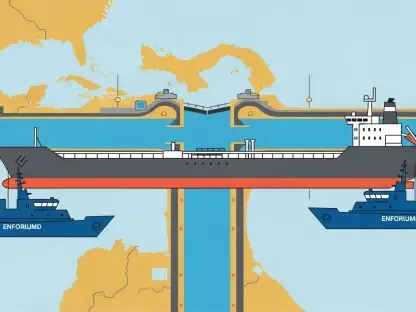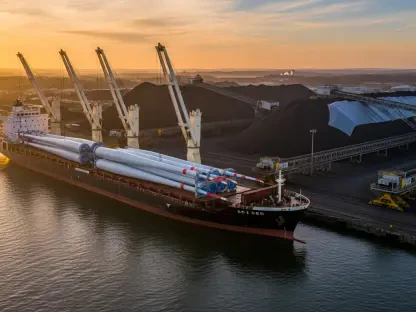The U.S. natural gas market has seen significant fluctuations, with futures prices dropping to a nine-week low driven by soaring production levels and shifting demand forecasts. This roundup brings insights from various industry experts, examining the factors behind these recent trends and their potential implications for the future.
Recent Decline and Market Context
The natural gas market has experienced broader energy trends, notably the prolonged drop in natural gas futures prices. In recent weeks, prices for natural gas futures on the New York Mercantile Exchange fell roughly 6%, reaching their lowest point since early February. This decline results from contrasting forces, such as record-breaking production rates, fluctuating demand forecasts, and the overarching impacts of colder weather earlier in the year. This article engages with industry insights to explore these elements, providing a comprehensive understanding of market dynamics and offering strategic perspectives for stakeholders.
Record Production Levels and Their Implications
Analyzing the Surge in U.S. Natural Gas Output
Recent data shows gas production in the Lower 48 states achieving unprecedented heights, topping 106.3 billion cubic feet per day on average in April. This production peak even surpassed previous records, reaching a notable 107.4 billion cubic feet per day mid-month. Industry leaders attribute this surge to advancements in extraction technologies and an increased number of operational drilling rigs. However, some warn that excessive production may result in market oversupply, which could depress prices further and lead to storage constraints.
Demand Trends and Their Market Impacts
Forecasts predict a decrease in natural gas demand, directly impacting market stability. Short-term demand drops are anticipated due to warmer weather trends, reducing heating needs and subsequent gas consumption. Notably, the cold snap earlier in January and February led to significant storage withdrawals, impacting inventories which now sit 4% below the five-year average. Understanding these demand fluctuations is vital for market participants to anticipate price movements and strategize accordingly.
Influence of LNG Exports on Domestic Prices
The increase in liquefied natural gas (LNG) exports also reshapes domestic pricing dynamics. Facilities such as Venture Global’s new Plaquemines export plant play a pivotal role in driving up export volumes. This trend holds both opportunities and risks; while it opens up new markets, it can also strain domestic supplies and elevate prices. The rise in U.S. LNG exports, positioning the country as a leading global supplier, underscores the need for careful balancing between export ambitions and domestic market stability.
Oil Drilling and Associated Gas Production
The relationship between oil drilling activities and natural gas output cannot be overlooked. Declines in oil drilling, particularly within major shale basins like the Permian and Bakken, have led to potential impacts on associated gas production. Some industry analysts predict that reduced oil drilling could inadvertently push natural gas prices higher by tightening supply. This interdependence signifies the intricate balance required to manage both oil and gas markets effectively.
Strategic Insights and Practical Applications
In understanding these trends, several strategic insights emerge for industry stakeholders. The interaction between heightened production levels and dropping demand points to the necessity for accurate forecasting and responsive production adjustments. Investors and companies must navigate this volatility by employing robust market analysis and flexible investment strategies. Deploying adaptive storage and distribution mechanisms can mitigate risks associated with supply overhangs and demand shifts.
Conclusion and Forward-Looking Perspectives
The dual pressures of record production and shifting demand create a complex landscape for the U.S. natural gas market. Monitoring these elements closely remains crucial to anticipate future trends and their impacts. For stakeholders, embracing adaptive strategies and maintaining a keen awareness of fluctuating factors will be key. The interplay of production, storage, and export activities must be meticulously managed to sustain market balance and capitalize on emerging opportunities. As the market continues to evolve, proactive management and strategic foresight will be essential in navigating the dynamic natural gas sector effectively.









